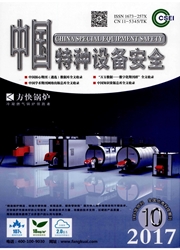

 中文摘要:
中文摘要:
线性共振声谱法可以用来检测含有线性弹性张量的物体缺陷,根据共振频率偏移、几何形状和密度共同确定在样本中的位置。但是如果是微小缺陷,应力和应变会呈现非线性关系,因此非线性共振声谱法是通过研究振幅和共振频率的关系来确定缺陷的位置和非线性的程度。本文采用非线性共振声谱法分析非对称边界条件下的缺陷,给出非对称边界经典非线性和非经典非线性下的共振频率偏移及高次谐波表达式,并且数值模拟结果表明此方法可以清楚分辨左、右缺陷的位置。
 英文摘要:
英文摘要:
Linear acoustic resonance spectroscopy method can be used to determine the posmon ot the defects with linear elasticity tensors, which is dependent on the shift of the resonant frequency, geometric shapes and densities of the sample. But if there is a minor defect, there will be a nonlinear relationship between stress and strain, so the position and the extent of the defects can be determined through the relationship between the amplitude and the resonance frequency by nonlinear acoustic resonance spectroscopy. In this paper, using nonlinear resonance ultrasound spectroscopy to analysis the defects with non-symmetric boundary conditions, the expression of the shift of resonance frequency and the amplitude of the high harmonics are given under classical nonlinear/ty and non-classical nonlinearity, and the numerical simulation results show that this method can be used to clearly distinguish the left and right locations of the defects.
 同期刊论文项目
同期刊论文项目
 同项目期刊论文
同项目期刊论文
 期刊信息
期刊信息
